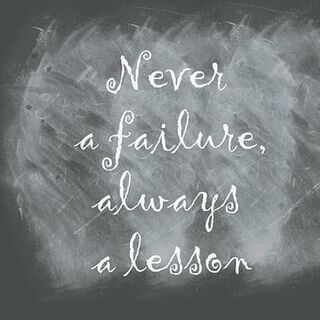Resilience
Why Failing Is Necessary for Creativity
How we accept failure often determines our creative output.
Posted December 17, 2021 Reviewed by Davia Sills
Key points
- Failing is a significant element of the creative process.
- What we learn from failing may be more important than what we learn from success.
- Failure is inevitable—as such, it can also be a learning opportunity.
Atychiphobia is not a word that pops up in many conversations around the water cooler at work. Yet fear of failure is a common condition that frequently stops creativity in its tracks and prevents us from moving forward in our lives.
Although we all experience failure in our lives, we don’t all react to it in the same way. Some of us embrace the concept of failure as a way of re-focusing and re-shaping our thinking. Others react to it by curling up into a little ball (an armadillo threatened by a large feline comes to mind) and shutting themselves off from the rest of the world. There is considerable evidence to support the notion that some people embrace failure while others shun it at every conceivable opportunity. To some, failure is good; to others, it is bad.
An interesting body of research has underscored the notion that there are some people who embrace challenges and disappointments as opportunities to re-focus their thinking. These are folks with a “growth mindset.” Then, there are other people who see failure as… well… as a complete failure. They believe that they never had the talent or skill anyway, and they probably never will. These are folks with a “fixed mindset.” These individuals embrace the belief that you are either born with talent, or you’re not. In short, you’re either in one group or the other.
Psychologist Carol Dweck has studied these kinds of mental sets extensively and provides clinical evidence that most people intentionally place themselves in one of those two groups. Dweck said that the group to which you have assigned yourself frequently determines how to react to any intellectual challenges. If you experience failure and give up, then you have conveniently assigned yourself to the “fixed” group; if you experience failure and use that as a learning opportunity or stepping stone to improve, then you have placed yourself into the “growth” group.
The implications of her research are that failure is an inevitable condition of our daily lives (we missed the left turn on our way to a friend’s house; we forgot to pay the electric bill on time and are assessed a penalty; we make a New Year’s resolution to lose 20 pounds, and six months later, we are still at the same weight). It’s how we approach failure that determines whether we are fixed in our thinking or ready for some growth. And, as you might imagine, people who believe they are members of the “growth” group tend to generate more creative ideas than do those who self-assign themselves to the “fixed” group.

A familiar example of a growth mindset
To illustrate, consider Thomas Alva Edison. In the latter part of the 19th century, Edison was attempting to improve the light bulb. For more than two years, he experimented with a host of potential filaments—bamboo shoots, animal hair, spider webs, carbon, and copper. Over 400 times, 600 times, a thousand times, he tried to discover an element that would sustain light.
Sometime during this long and arduous process, a reporter was sent to interview him. During the interview, the reporter asked Edison, “It seems as though you’ve tried and tried to invent the incandescent light bulb and continue to fail each time. Why is that?” Edison looked the reporter square in the eye and said, “I have not failed. I’ve just found 10,000 ways that won’t work.”
Edison knew that his interpretation of failure was a critical part of the discovery process.
He believed that each unsuccessful attempt was moving him closer to his ultimate goal. In studies of creative people, psychologists have discovered that one of the most distinguishing features separating creative people from non-creative people is that creative people make lots of mistakes and continue to work through them, while non-creative people make a mistake and stop. Most people consider success and failure as polar opposites; in reality, they are both parts of the same process.
Former rocket scientist Ozan Varol (who certainly saw his share of technological failures) clarifies the importance of this construct: “If we don’t acknowledge we failed—if we avoid a true reckoning—we can’t learn anything. In fact, failure can make things worse if we get the wrong messages from it. When we attribute our failures to external factors—the regulators, the customers, the competitors—we have no reason to change course. We throw good money after bad, double-down on the same strategy, and hope the wind blows in a better direction.”
“Only those who dare to fail greatly can ever achieve greatly.” — Robert Kennedy
References
Carol Dweck. Mindset: The new psychology of success (New York: Ballantine Books, 2006).
Anthony D. Fredericks. From fizzle to sizzle: The hidden forces crushing your creativity and how you can overcome them (Indianapolis, IN: Blue River Press, 2022).
Ozan Varol. Think like a rocket scientist: Simple strategies you can use to make giant leaps in work and life. (New York: Public Affairs, 2020).


